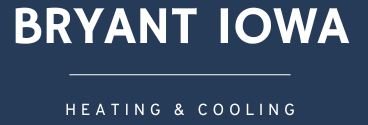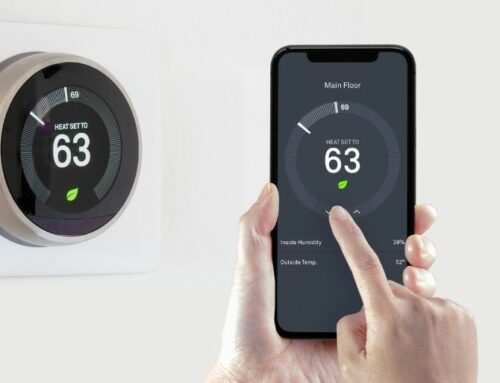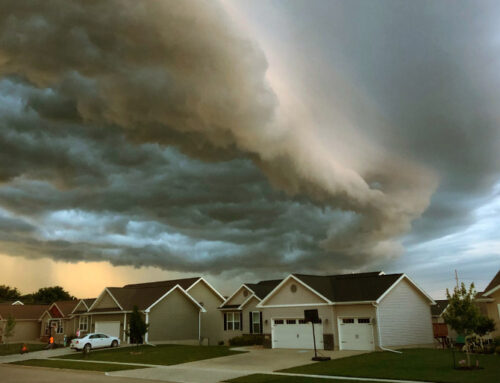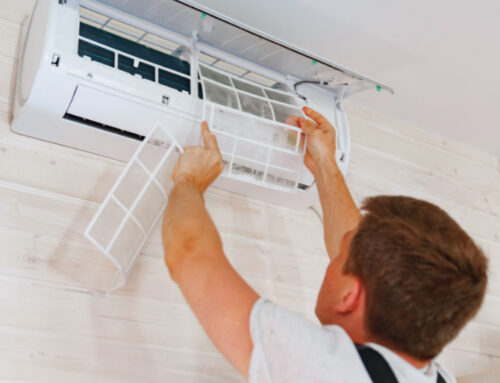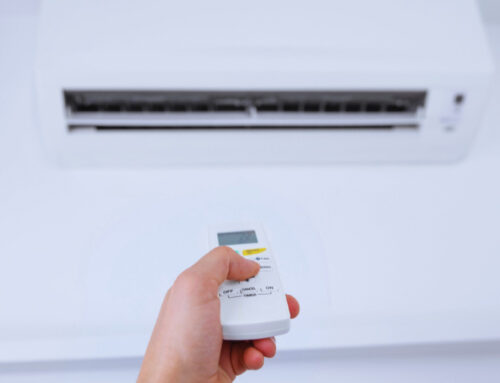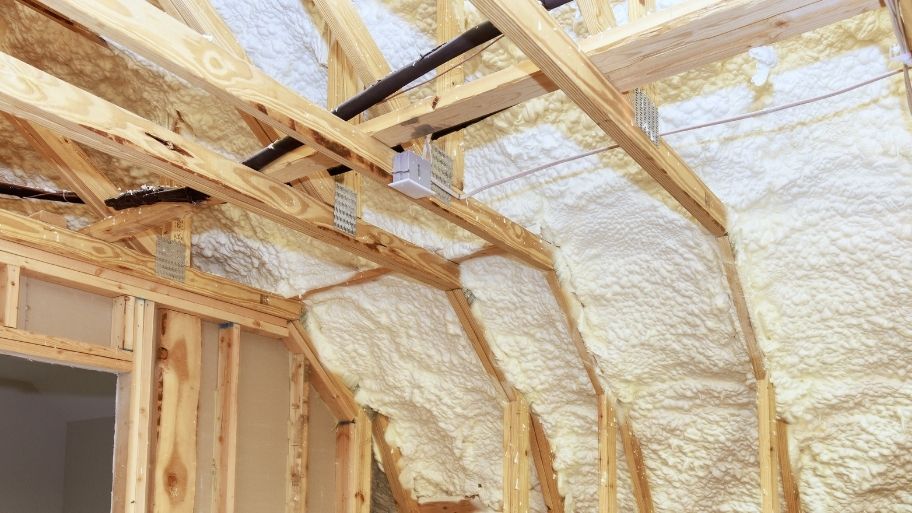
Why Insulation is Key to HVAC Efficiency
Imagine this: You crank up your heating in the winter, but no matter how high you set the thermostat, your home still feels chilly.
Or, during the summer, your air conditioner runs all day, yet certain rooms still feel like a sauna. Sound familiar?
Here’s the real problem—your HVAC system may not be the issue. Your insulation is.
If you’ve been dealing with temperature inconsistencies and rising energy bills, learning how to insulate your house better can help improve HVAC efficiency and keep your home comfortable year-round
Quick Answer:
Inadequate insulation forces your HVAC system to run longer and work harder, driving up energy costs and making it difficult to maintain consistent indoor temperatures.
Studies indicate that improving insulation can cut energy expenses by around 20%, helping homeowners maintain a more efficient and comfortable living space.
But if your home lacks insulation in key areas, warm or cool air escapes faster than your HVAC can replace it—wasting energy and money.
Signs Your Home’s Insulation is Hurting Your HVAC System
If you’re experiencing any of these issues, it might be time to learn how to insulate your house better to prevent energy loss and keep your HVAC system from overworking.
❌ Rooms that never feel the right temperature – If some rooms are too hot while others are too cold, it means air is escaping where it shouldn’t.
❌ Sky-high energy bills – Are your utility costs rising even when you haven’t changed your thermostat settings? Your HVAC might be working overtime due to poor insulation.
❌ Your HVAC runs constantly – If your furnace or AC seems to never shut off, it’s struggling to maintain indoor comfort—often because of air leaks and thin insulation layers.
❌ Drafts, cold floors, and hot ceilings – Walk around your home. Do you feel cold air near the walls or windows? Or does your upstairs feel like an oven? These are insulation red flags.
❌ Ice dams appearing on your roof in winter – Icicles might look pretty, but they’re a major sign of heat fleeing through your attic due to poor insulation.
✅ The Solution: Fix your insulation, and your HVAC will finally work as it should—without constantly running or inflating your energy bills.
Best Places to Insulate for Maximum HVAC Efficiency
1. Attic Insulation (Most Important Area)
Heat rises, and without proper attic insulation, your home loses a significant amount of warm air in winter and absorbs too much heat in summer. If your upstairs rooms always feel too hot or too cold, your attic is likely the problem.
The best insulation materials for attics include:
- Blown-in Cellulose: Great for covering hard-to-reach areas and sealing small gaps.
- Fiberglass Batts: A cost-effective option that works well between attic joists.
- Spray Foam: Seals cracks while insulating, preventing unwanted air leaks.
By upgrading attic insulation, you prevent extreme temperature swings upstairs and reduce the burden on your HVAC system. If you’re wondering how to better insulate your home, focusing on the attic is the best place to start.
2. Duct Insulation (Reduce Energy Waste)
Your ducts are responsible for circulating heated or cooled air throughout your home. But if they aren’t properly sealed and insulated, air escapes before it ever reaches your rooms—forcing your HVAC to work harder to compensate.
Best insulation options for ducts:
- Duct Wrap: Helps retain conditioned air and prevents energy waste.
- Spray Foam: Both insulates and seals leaks in hard-to-reach ductwork.
If your energy bills are higher than expected or you notice weak airflow from vents, your duct insulation might be the hidden culprit. Sealing and insulating ducts ensures that your HVAC system delivers air efficiently, reducing unnecessary energy waste.
3. Wall Insulation (Stop Heat Transfer Efficiently)
Without sufficient wall insulation, outside temperatures affect your indoor comfort, forcing your HVAC to adjust more frequently. While this is a common issue in older homes, even newer homes may have walls with inadequate insulation levels.
The best solutions to block heat transfer through walls include:
- Blown-In Insulation – Fills wall cavities without requiring major renovations, ideal for retrofitting existing homes.
- Rigid Foam Boards – Offers high thermal resistance, commonly used during home remodeling.
- Spray Foam – Seals gaps and provides both insulation and air sealing for maximum energy efficiency.
Insulating walls helps maintain stable indoor temperatures, reducing the need for constant HVAC adjustments and lowering energy consumption.
4. Windows & Doors (Sealing Air Leaks to Reduce Energy Waste)
Even with well-insulated walls, drafty windows and doors can undo all that effort—leading to heat loss in winter and undesirable heat gain in summer.
The best upgrades to improve insulation around windows and doors include:
- Weatherstripping – Prevents warm or cool air from escaping through small gaps around door and window frames.
- Caulking – Seals cracks and joints, blocking air infiltration and improving overall insulation effectiveness.
- Insulated Curtains – Adds an extra thermal barrier to contain heat in winter and block heat in summer.
- Double or Triple-Pane Windows – Reduces heat transfer far better than single-pane glass, helping to stabilize indoor temperatures and lessen HVAC workload.
By sealing air leaks, you prevent unnecessary HVAC usage, making your heating and cooling system work more efficiently without constant cycling.
5. Basement & Crawl Space Insulation (Prevent Heat Loss from Below)
A poorly insulated basement or crawl space acts like an open door for heat loss, making your floors colder and causing discomfort throughout your home. This often goes unnoticed, but fixing insulation in these areas can significantly improve indoor temperature control.
The best materials for insulating basements and crawl spaces include:
- Rigid Foam Boards – Effective for insulating basement walls, providing both thermal resistance and moisture control.
- Spray Foam – Expands into small gaps, creating an airtight barrier that also helps control humidity levels.
By properly insulating these lower areas, your home keeps heat better in the winter and stays cooler in the summer—keeping your HVAC from overcompensating.
How to Check and Upgrade Your Insulation for Maximum HVAC Efficiency
How to Inspect Your Home’s Current Insulation
Not sure if your home’s insulation is up to par? Here’s how to assess its effectiveness before upgrading:
- Check the Attic & Walls: Look for thin insulation layers, gaps, or areas where insulation has shifted over time. If you can see joists in the attic, you likely need more insulation.
- Test for Drafts: On a windy day, carry and hold a candle or incense stick near windows, doors, and electrical outlets. If the flame flickers, air is leaking.
- Use an Infrared Camera: A thermal imaging tool can reveal heat escaping through walls, floors, and ceilings. Many energy companies offer this as part of a home energy audit.
- Schedule a Professional Energy Audit: Experts can identify insulation weak spots and recommend cost-effective upgrades based on your home’s structure.
✅ By pinpointing insulation gaps, you can target the exact areas that need improvement—saving time and money on unnecessary upgrades.
Understanding R-Values for Proper HVAC Efficiency
Insulation effectiveness is measured in R-values, which indicate how well a material resists heat flow. Choosing the right R-value ensures your HVAC system isn’t working overtime to compensate for poor insulation.
Here’s a quick R-value guide based on U.S. Department of Energy recommendations:
| Home Area | Recommended R-Value |
|---|---|
| Attic | R-38 to R-60 |
| Walls | R-13 to R-23 |
| Floors | R-25 to R-30 |
| Basement/Crawl Space | R-11 to R-25 |
✅ Upgrading insulation to meet these standards keeps indoor temperatures stable and significantly reduces energy waste.
Choosing the Right Type of Insulation
Now that you know where to insulate, picking the right material is key. Here’s a breakdown of the best insulation types based on location and needs:
- Fiberglass Batts – Best for attics & walls, budget-friendly and easy to install.
- Blown-In Cellulose – Ideal for older homes & hard-to-reach spaces, offers excellent coverage.
- Spray Foam – Provides both insulation & air sealing, great for filling cracks and irregular spaces.
- Rigid Foam Board – Perfect for basements & crawl spaces, moisture-resistant with high insulation value.
✅ Selecting the right insulation type ensures your home stays comfortable while minimizing HVAC strain.
Get Expert Help for the Best Home Comfort Solutions
Upgrading insulation is one of the optimal methods to improve HVAC efficiency, but insulation alone won’t solve every comfort issue in your home.
Even with the right materials in place, airflow problems, duct leaks, and an inefficient HVAC system can still cause high energy bills and uneven temperatures.
Why DIY Insulation Has Limits
While adding insulation is a great first step, many homeowners overlook other factors that impact HVAC performance, such as:
✅ Leaky Ductwork – Even with proper insulation, air can escape through poorly sealed ducts, reducing the efficiency of your heating and cooling system.
✅ Improper Airflow Balance – Some rooms might still feel too hot or too cold due to poor air distribution or blocked vents.
✅ HVAC System Age & Efficiency – If your HVAC unit is outdated or struggling, it may not deliver the full benefits of improved insulation.
✅ Humidity Control – Insulation helps with temperature regulation, but high humidity levels can still make a home feel uncomfortable without the right HVAC adjustments.
How Bryant Iowa Heating & Cooling Can Help
For homeowners in Iowa, Bryant Iowa Heating & Cooling offers professional solutions to ensure your HVAC system runs efficiently alongside your insulation upgrades. Our team can:
Get HVAC Expertise You Can Trust
Want to maximize your HVAC efficiency and home comfort? Don’t let poor airflow or outdated systems reduce the benefits of your insulation improvements.
📞 Contact Bryant Iowa Heating & Cooling today for expert solutions tailored to your home’s needs!

About the Author
For over 30 years, DuWayne McDaniel has been the trusted name behind Bryant Iowa Heating and Cooling in Ankeny, IA. With a Masters in HVAC and Hydronics, NATE certification, and EPA licensing, DuWayne brings unparalleled expertise to residential and commercial HVAC services. His commitment to 100% customer satisfaction has earned him the BBB Torch Award and made Bryant Iowa a Bryant Factory Authorized Dealer. DuWayne’s deep understanding of HVAC needs ensures year-round comfort for homes and businesses alike.
